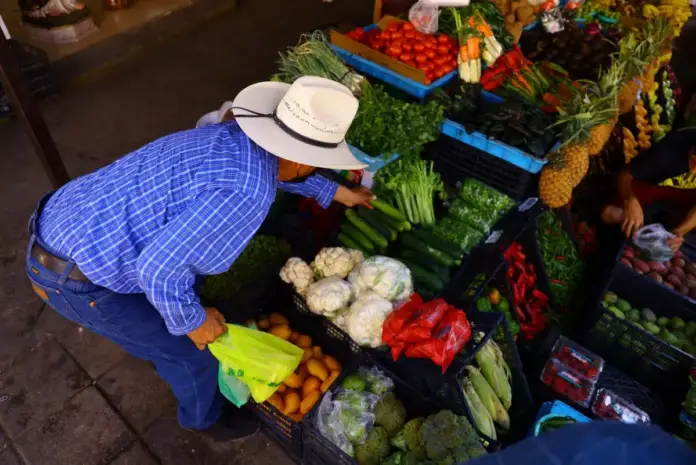
Mexico continues to import more than it exports. In the first half of the year, the trade deficit stood at 5.497 billion dollars, a significant amount, because with a peso that depreciates against the dollar, purchases abroad are affected.
Ramses Pech, energy and economics analyst at Caraiva y Asociados-León & Pech, points out that there is a complicated scenario for the coming months and for Claudia Sheinbaum’s administration, since a more expensive dollar is expected, with an average of 20 pesos and this means higher inflation.
With a stronger Mexican currency, imports of food, oil and consumer goods become cheaper, which helps reduce inflationary pressures. However, analysts see it as far off that the peso will strengthen again against the dollar, after the shock of “Black Monday” on August 5, which represents pressure for price increases.
Ignacio Martínez Cortés, Coordinator of the UNAM Laboratory of Analysis in Commerce, Economy and Business (Lacen), says that it is in imports for immediate consumption that are fresh and processed foods where inflation can be impacted.
Fruits, vegetables and greens, as well as dairy products and certain types of cereals that are bought abroad would be impacted by the exchange rate, and this would affect families with incomes above four minimum wages the most.
Martínez Cortés says that, in addition to imports for immediate consumption, there are components, capital goods and intermediate goods, which do not have a major impact on inflation.
Mexico is increasingly importing more agri-food products, mainly from the United States, to satisfy its national consumption, such as pork, chicken and corn.
Pork registers a real increase of 7% in the value of imports in the first half of the year, this compared to the same period in 2023, according to data from Banxico.
While the value of imports of poultry meat and offal, which includes chicken, has grown 2% in the period referred to.
Juan Carlos Anaya, general director of Grupo Consultor de Mercados Agrícolas, explained that there is also pressure for inflation in the short term due to the price of vegetables, whose production was affected by the issue of extreme weather: drought and excessive rain. In addition to increases in lemon prices due to producer strikes, as a protest against the collection of floor rights by organized crime.
However, by the end of the year it is expected that, due to a greater supply of agricultural products for the season, prices will decrease.
He stressed that the appreciation of the dollar against the peso also makes Mexican exports more competitive, since they are bought for more pesos per dollar.
Fuels on the rise
Within the energy sector, Pech points out that the impact of rising gasoline prices on inflation is already being seen, and if there is a loss of control due to geopolitical issues that do not allow prices to be contained or lowered, it will be very difficult for the basic basket to remain affordable, and in 2025 it will be difficult to have a salary adjustment that mitigates such high prices.
“The peso-dollar parity has had a very big impact here in Mexico, and has put upward pressure on the price of gasoline. Given that Mexico imports a significant volume of gasoline to supply the domestic market, it certainly has an impact on prices in the national market,” said Arturo Carranza, director of Energy Projects at Akza Advisors.
Martínez Cortés agrees that the gasoline and diesel portion will also be a factor to take into account, since a large part of what is consumed in the country is imported, so the exchange rate in this area has an immediate impact.
In Mexico, domestic sales of gasoline and diesel average 926,800 barrels per day from January to June of this year, and Pemex’s domestic production is 479,700 barrels per day, meaning that half of this has to be imported.
Carranza explained that the price of diesel has an impact on prices, since it is the fuel that is mostly used for the transportation of consumer goods, and also of people.
Source: expansion




